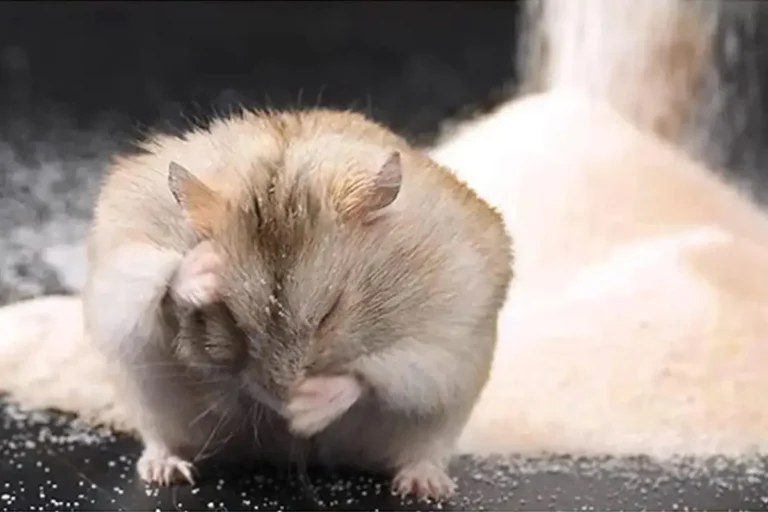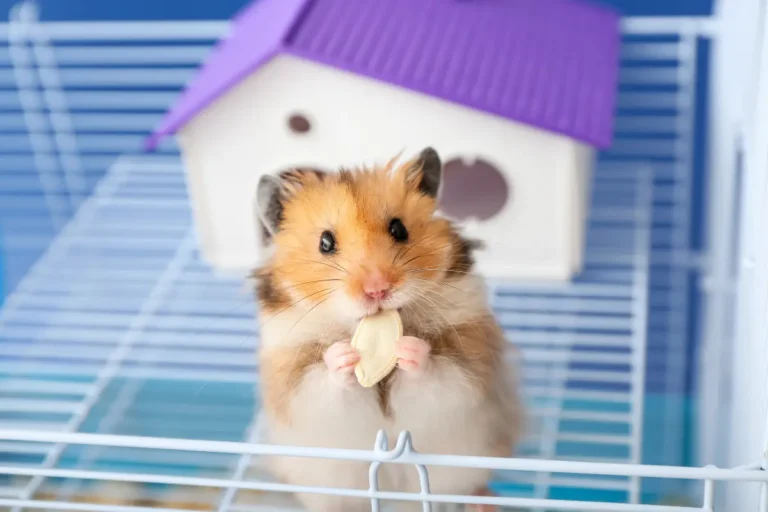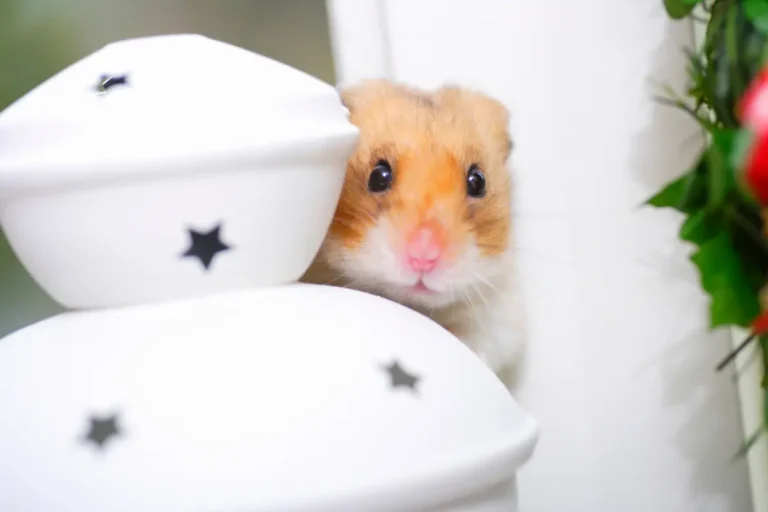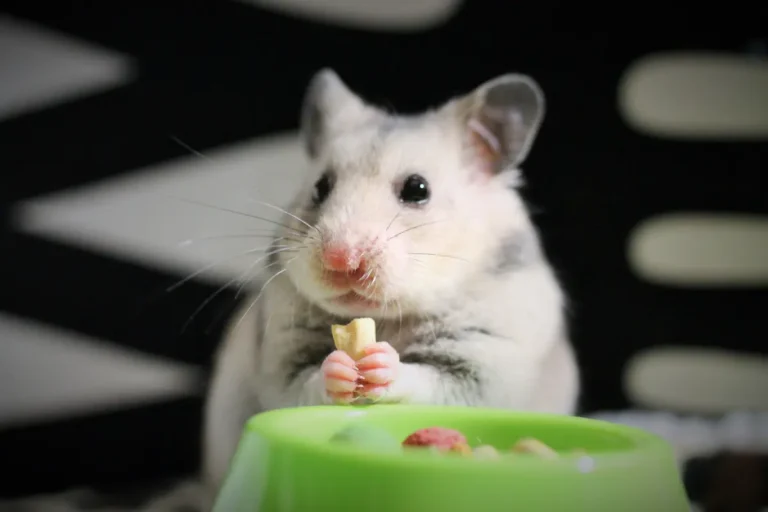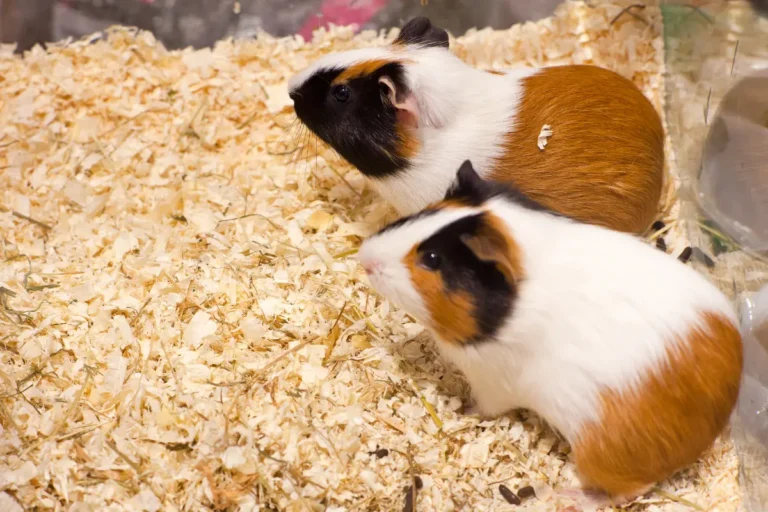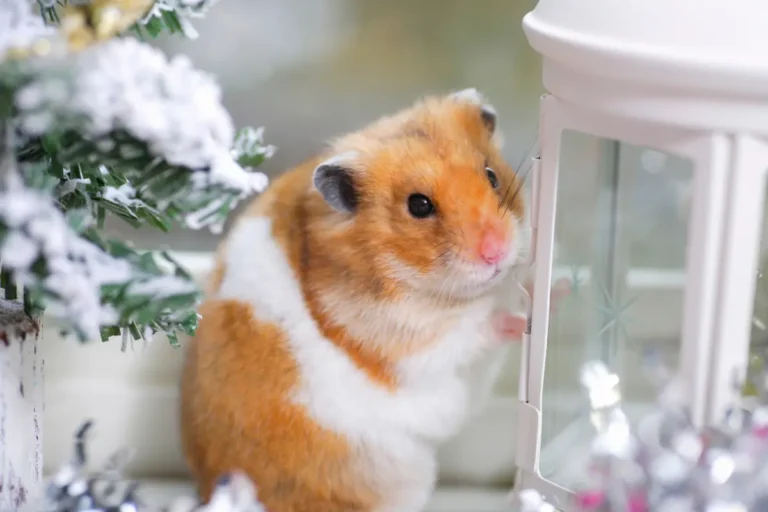Is Your Hamster Down in the Dumps? Recognizing Signs of Depression
Hamsters are generally active, curious, and playful pets, but they can experience periods of sadness, boredom, and even depression. Recognizing signs of depression in your hamster and understanding the causes are essential for addressing their needs and ensuring they live a happy, fulfilling life.
Can Hamsters Experience Depression?
Although hamsters may not feel emotions in the same complex way humans do, they are sensitive animals that can become stressed, anxious, or even display signs of depression under certain conditions.
Depression in hamsters can be triggered by various environmental, social, or health-related factors, leading to behavioral changes that signal emotional distress.
Common causes of depression in hamsters include:
- Lack of Mental and Physical Stimulation: A boring environment with limited toys or tunnels can lead to boredom and, over time, depressive behavior.
- Poor Cage Conditions: Small or cramped cages can make a hamster feel trapped and deprived of necessary exercise space.
- Isolation or Loneliness: Although some species of hamsters are solitary, they still require regular interaction with their human caretakers.
- Sudden Changes: Moving to a new location, changes in cage layout, or introduction of new pets can make hamsters feel insecure.
- Illness or Pain: Health problems may lead to discomfort, which can affect their mood and activity levels.
Signs of Depression in Hamsters
Recognizing the signs of depression in hamsters allows you to respond promptly and make adjustments to improve their well-being. Here are the most common indicators that may suggest your hamster is feeling depressed or stressed:
1. Reduced Activity and Lethargy
Hamsters are typically active, especially at night, engaging in running, digging, and exploring. A sudden drop in activity, such as spending more time sleeping or avoiding exercise, can indicate depression.
- What to Look For: If your hamster stops using its wheel, avoids exploring, or appears uninterested in its toys, it may be experiencing low energy or motivation.
2. Avoidance and Hiding Behavior
While hamsters enjoy cozy spaces to sleep and burrow, excessive hiding can indicate sadness, fear, or a need for comfort. If your hamster spends most of its time in a hideout or burrow, it could be avoiding interaction due to depression or stress.
- What to Look For: Observe if your hamster stays hidden even during its usual active hours or avoids coming out to eat or explore.
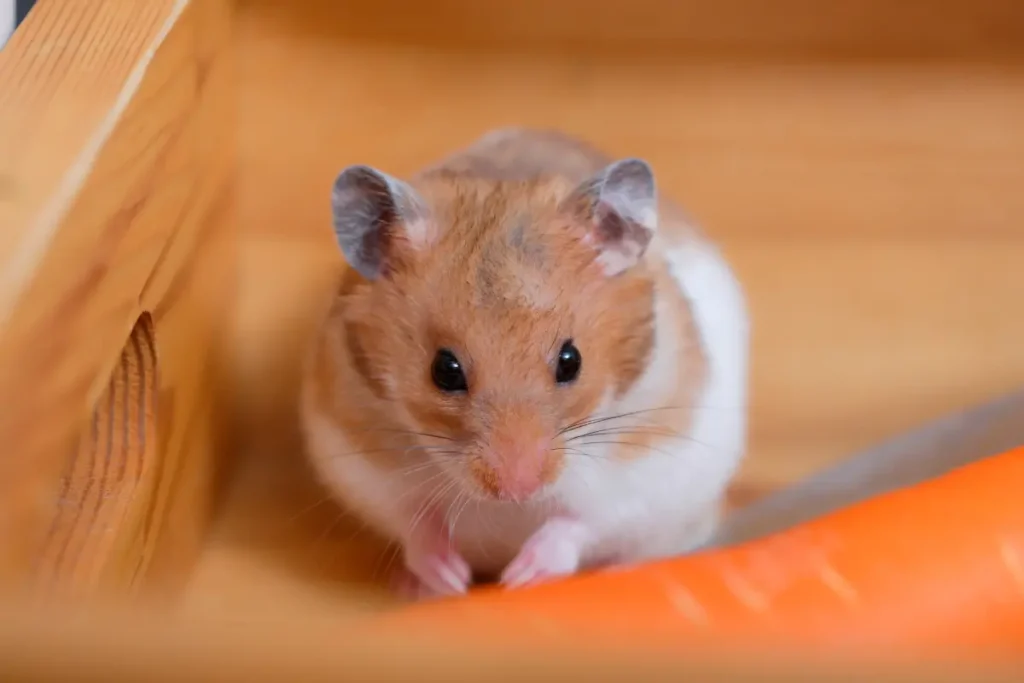
3. Changes in Eating and Drinking Habits
A decrease in appetite or interest in treats can be a sign of emotional distress. Conversely, some hamsters may overeat or hoard food excessively when stressed.
- What to Look For: If you notice a significant drop in food consumption, uncharacteristic hoarding, or reduced water intake, depression or illness may be the cause.
4. Excessive Sleeping
Hamsters are naturally nocturnal, but they will still have active periods throughout the night. If your hamster sleeps excessively or seems uninterested in its surroundings even when awake, it could be a sign of depression or lethargy.
- What to Look For: If your hamster only wakes for short periods and immediately returns to sleep, it may be experiencing depressive behavior or low energy.
5. Aggression or Irritability
A hamster that becomes more aggressive or defensive than usual may be feeling stressed, frustrated, or uncomfortable in its environment. Depressed or stressed hamsters may respond by nipping or biting.
- What to Look For: Notice if your hamster seems less tolerant of handling, shows irritability, or displays defensive postures, such as hissing or biting.
6. Excessive Grooming or Fur Loss
In stressful situations, hamsters may resort to over-grooming as a way to cope, which can lead to hair loss or skin irritation. This is a common sign of anxiety or emotional distress in hamsters.
- What to Look For: Keep an eye out for bald spots, frequent scratching, or irritated skin, which may signal that your hamster is attempting to self-soothe.
7. Vocalizations
Hamsters are generally quiet animals, so unusual sounds like squeaks, chattering, or hissing can indicate distress, fear, or even pain.
- What to Look For: If you hear vocalizations when handling or interacting with your hamster, it may be signaling discomfort or emotional distress.
Common Causes of Depression in Hamsters
Understanding the root causes of your hamster’s depression can help you address and prevent further emotional distress. Here are some common reasons why hamsters may become depressed:
- Inadequate Cage Size and Setup: A cramped cage can lead to frustration and decreased motivation. Hamsters require ample space (at least 450 square inches of floor space) to burrow, exercise, and explore.
- Lack of Stimulation and Enrichment: Without toys, tunnels, and an exercise wheel, hamsters can become bored, leading to low energy and depressive behavior.
- Social Isolation: Hamsters, while generally solitary animals, still benefit from interaction with their owners. Regular interaction helps prevent loneliness and keeps them mentally stimulated.
- Sudden Environmental Changes: Moving the cage or introducing new pets can disrupt a hamster’s sense of security, leading to stress and depression.
- Undiagnosed Health Issues: Pain or discomfort from health issues such as dental problems, respiratory infections, or arthritis can make a hamster less active and affect its mood.
How to Help a Depressed Hamster
If you suspect your hamster is feeling depressed, there are several ways you can help improve its environment, provide enrichment, and support its emotional well-being.
1. Provide a Larger, Enriched Cage Environment
Hamsters need space to explore, dig, and play. Ensure the cage is large enough and filled with deep bedding, hiding places, and various textures to stimulate their natural instincts.
- Tip: Use at least 4-6 inches of bedding to allow burrowing and digging, which helps reduce stress.
2. Offer Interactive Toys and Enrichment
Hamsters benefit from a variety of toys and new environments to explore. Adding toys like tunnels, chew sticks, cardboard tubes, and ladders can provide mental stimulation and reduce boredom.
- Tip: Rotate toys every week to keep their environment fresh and interesting. Introduce new items to spark curiosity.
3. Create a Quiet and Calm Environment
Hamsters are sensitive to loud noises and vibrations, which can be stressful. Place the cage in a quiet room, away from high traffic, loud appliances, or other pets.
- Tip: Avoid sudden movements or noises around the cage, as these can startle your hamster and increase anxiety.
4. Establish a Routine
Hamsters thrive on consistent routines, which help them feel secure. Try to maintain a regular feeding, handling, and cleaning schedule to provide a stable environment.
- Tip: Interact with your hamster during its natural active times, usually in the evening or early morning, to avoid disturbing its natural sleep cycle.
5. Increase Interaction Gradually
Regular interaction can help a depressed or lonely hamster feel more connected. Start with gentle talking and offer treats to build trust. If your hamster is comfortable, increase handling sessions gradually.
- Tip: Allow your hamster to come to you rather than forcing interaction. Respecting their space and providing positive reinforcement with treats can help build a bond.
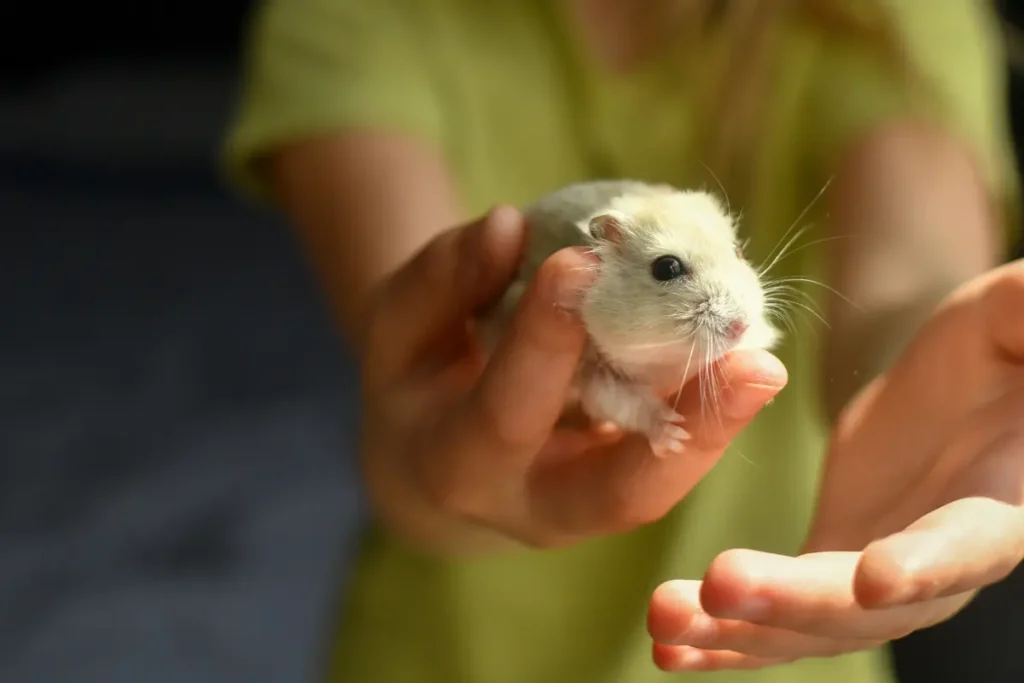
6. Ensure a Balanced Diet and Proper Hydration
A balanced diet is crucial for your hamster’s health and can positively impact their mood. Provide high-quality hamster food, supplemented with fresh vegetables and occasional fruits for variety.
- Tip: Check water and food levels daily, and introduce small, hamster-safe treats to encourage eating if they have shown a lack of interest in food.
7. Consult a Veterinarian if Needed
If your hamster’s signs of depression persist despite adjustments in its environment, consult a veterinarian. Health issues, such as dental pain or respiratory infections, can mimic signs of depression and require medical attention.
Preventing Depression in Hamsters
Taking steps to prevent depression is the best way to ensure your hamster remains happy and healthy. Here are some strategies to keep your hamster mentally and physically stimulated:
- Provide Adequate Space and Cage Enrichment: Ensure the cage meets the minimum space requirements and is filled with bedding, tunnels, and toys that encourage exploration.
- Offer New Toys and Regular Rotation: Change toys and introduce new items regularly to prevent boredom.
- Socialize and Interact: Spend time with your hamster daily, offering treats, talking softly, and handling them gently if they’re comfortable.
- Maintain a Balanced Diet and Access to Fresh Water: Provide a high-quality diet and check water daily to support their physical and mental health.
- Keep a Stable Environment: Avoid frequent changes in cage location, layout, or routine to maintain a stable, secure habitat.
In conclusion, regular observation of their behavior will allow you to identify any signs of sadness early and make adjustments as needed. With a bit of care and attention, your hamster can thrive in a joyful, healthy environment.

